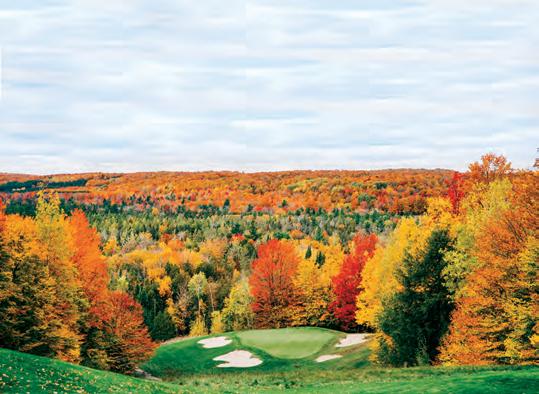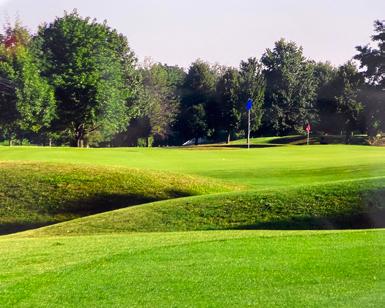
27 minute read
Link’s Gems
by Let's Golf
Dave Lockhart
A Golden Oldie
Advertisement
One of the beauties of our sport is all of the unique and wonderful land that we play and compete on. The Kankakee Elks Club sounds more like a place to gather than to play the game. Turn back the clock to the late 1920s when two of golf’s most respected curators, William B. Langford and Theodore Moreau, devised a plan for a private course and getaway for the high rollers of the day.
Set alongside the Kankakee River, this semi-private facility has been open to the masses for many years, and boy are we lucky. Unspoiled and quiet, the pure undulating landscape is a welcome change from the hectic, sometimes humdrum, courses of Chicagoland. Langford, a Chicago native, was quite a player and brainiac back in the day. He excelled at Yale University, where he was captain of the golf team, and then continued his education receiving a Master’s degree in Civil Engineering from Columbia University. Moreau was the creative shaper, crafting subtle mounding throughout the layout, punctuated by fun and distinctive elevated greens where most putts can present a challenge.
The course was designed by Chicago’s very own William Langford, who was recently inducted into the Illinois Golf Hall of Fame. While located in a relatively flat part of the region, Langford used what the land gave him while putting the spotlight on the green complexes. He left his signature here by creating one-of-a-kind elevated greens throughout the golf course.
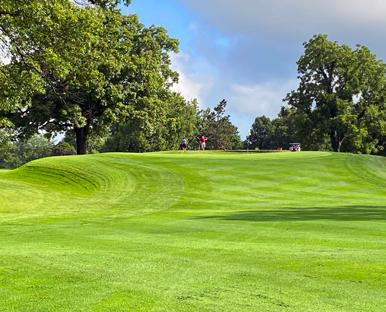
Dr. Karl Keller, a longtime member and Kankakee Elks Country Club Trustee, says this about the layout, “The biggest thing people notice when they first get here is the green complexes which are mostly all elevated. You don’t want to have situations where you short-side yourself or go over the greens rating of 71.6 from the nearly 6,600 yard back tees.
Langford and Moreau came along in the golden age of architecture and their most impressive and popular course may be Lawsonia Links in Green Lake, Wisc. That course is a one of the top ranked in the Land of Cheese and is truly a must-play inland links layout. By the way, Langford was recognized for his entire body of work by being inducted into the Illinois Golf Hall of Fame in 2019.
“I think the best thing here is the value and the quality of the golf. I think if you come down here and play it once, you’ll want to come back many times to enjoy the Langford design, it’s a beautiful course,” said Jim Weber, Kankakee Elks County Club’s Director of Golf
Kankakee Elks looks innocent and open at first glance, but the routing is stellar. Once you get out there and tee it up, you will notice that to do well it’s about positioning your ball for the best
“It’s a course you can play every day and continually be challenged due to the variety of pin placements on every green,” said Jim Weber. “The golfer’s attention is captured from the start of their round and the first of many elevated greens. Almost all the greens put a premium on not short siding yourself or, worse, go too far past the hole.”
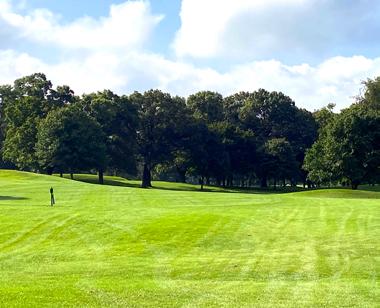
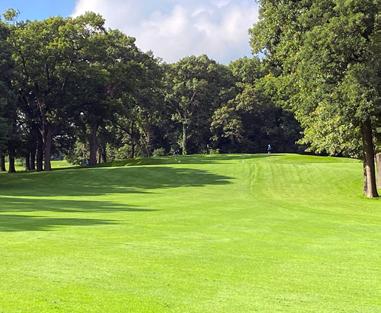
angle to the pin. There is only one water hazard and only a handful of sand bunkers that come into play. Back in the day, here was an interesting quote from Langford, “Hazards should be placed so that a player can avoid them if he gauges his ability correctly, so that they will make every man’s game more interesting, no matter what class player he is, and offer a reward commensurate with the players ability.”
Located just outside of Kankakee in the town of St. Anne, Ill., this facility is about an hour south of The Windy City. Beat the crowds and take a trip over here to play this track. It is an incredible bargain, coming in at only $28 on the Monday special, $35 on Tuesday through Friday, and $45 on weekends and holidays. Do check out the website for dynamic and most current pricing.
This course was integrated into the land and not forced upon it. It was created in the era before bulldozers, so this place has a natural and real feeling about it. It’s like stepping back in time. You’ll be sure to hit every club in the bag on this par-72 design with a slope of 124 and a rating of 71.6 from the 6,600 yard back tees.
It’s an old-fashioned design that won’t beat you up; however, you still have to employ ball position strategy and, of course, putt your ball well to score well. The bottom line is that you can’t recreate the golden age of architecture, so get here and enjoy this step back in time.
Golfers who come here to play for the first time always return to experience this great Langford design. It’s a beautiful, phenomenal course, and speaks for itself.
Kankakee Elks Country Club www.elksgolf627.com 2283 Bittersweet Drive St. Anne, IL 60964 815.937.9547
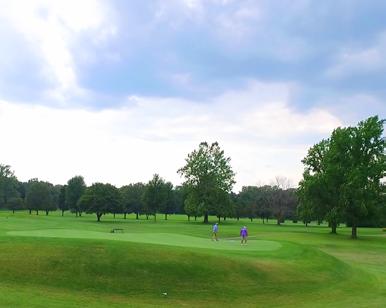
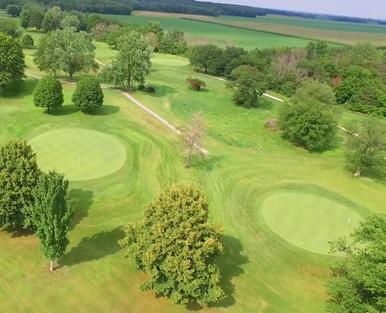
Some 16,000 years ago, the ice dam supporting an ancient 150-foot deep Central Wisconsin glacial lake burst open. Its waters quickly emptied in just a few days. The resulting flood would proceed to create the dramatic landscape that we know today as the Wisconsin Dells. The sandy lakebed left behind slowly transitioned to form dales, glens, meadows, hollows, valleys, and dunes. Flash forward many centuries later when a huge swath of that same land was purposed into woodlands that were then harvested for use by the timber and paper industries. Then flash forward a second time to the early 2000s. That was when golf construction executive Craig Haltom came across a parcel of this wonderland that he immediately knew would make for a great golf property. Haltom shared his discovery with golf entrepreneur Mike Keiser (of Bandon Dunes fame) who reviewed the land’s possibilities along with sons Chris and Michael. After an initial purchase of 1,700 acres from the Plum Creek Timber Company, the Keisers hired acclaimed architects Bill Coore and Ben Crenshaw to shape the land into a championship course unlike any other in Wisconsin. From emptied lake bed and forested dunes emerged the origins of the international golf destination we know today as Sand Valley Resort. Since the opening of the original Sand Valley course in 2017, the resort has gone on an amazing growth spurt. The acreage has expanded to 12,000 acres and now incorporates the stunning David Kidd-designed Mammoth Dunes; the delightful par-3 course known as The Sand Box, grass tennis
Sand Valley
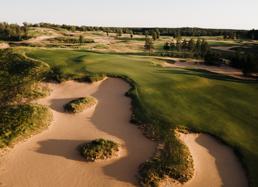
Wild and Wooly!
Wisconsin’s Sand Valley Resort Continues Explosive Expansion
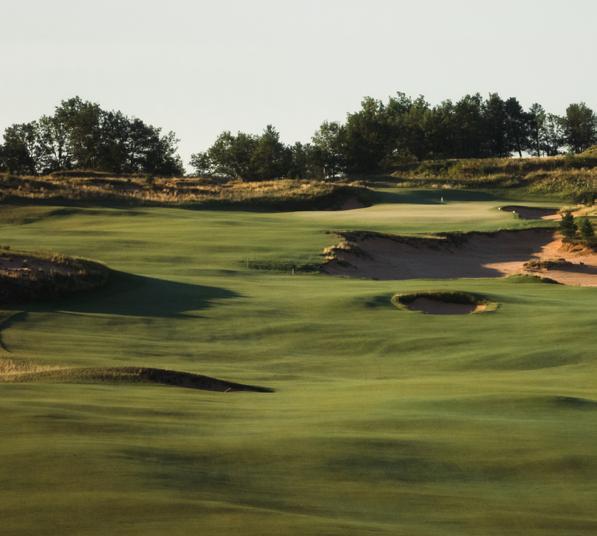
courts, an elegant clubhouse, lakes, hiking trails, 4 and 8-bed cottages, and multiple restaurants. Honored as the Best New Course of 2017 by multiple national golf magazines, Sand Valley ranks high on the coolness meter. Its landscape is a wildly flowing lunar-like surface dotted by red pines, native grasses, prickly cacti and, of course, sand dunes. The design is amazingly varied and dramatic. Fairways were built to play hard and fast; thus, tee shots spring forward by 10, 20, and even 30 yards if the ball catches the back end of a hill. Greens are large and massively undulating and challenge players to consider angles and pin positions on every approach shot. Even the starter’s area is ultra-hip, with a patio towering above the course incorporating a hut serving $1 tacos and $3 beers. The character and challenge of Sand Valley are revealed immediately as the 358-yard first hole overwhelms the eye with a virtual sea of sand interspersed with native grasses winding up the left side of the fairway. Even a perfect drive up the right side doesn’t assure an easy par if the flagstick is placed on the backside of a huge, tiered green. My favorite hole on the course is the delightful 136yard No. 8, which calls for a short iron directed over a yawning sand bunker to a large contoured putting surface rising high above the fairway. Use at least one extra club on this par 3 to compensate for the elevation change. While many surprises are in store on the longer and more rigorous back nine, the 17th hole deserves special attention due to its fascinating design. At 236 yards from the tips, the long par 3 intimidates due to both its length and its blind view from off the tee. Where to hit? A passageway slopes left and right to direct balls onto a punchbowl green that generously accepts a shot that makes it over a crest. While it is tempting to compare Mammoth Dunes to its sister course, the fact is that the layouts are on completely different landscapes. The first course is wide-open with trees only lining the outside of the property’s perimeter. Trees are a prominent feature on Mammoth Dunes—not necessarily as obstacles but to frame the direction of holes. Named Best New Course of the Year by multiple national golf magazines in 2018, Mammoth Dunes was inspired by David Kidd’s earlier work at Bandon Dunes in Oregon. The stated philosophy of Kidd’s design firm is to create courses “as natural as possible, as seamless as possible, and as sustainable as possible.” Given 500 acres of pristine land, the architect produced a feast for the eyes complete with remarkable panoramas, extravagantly wide fairways, contoured greens and even a pair of drivable par 4s. The end-result was a course that Stephen Hennessey of Golf World says “might be Kidd’s team’s best work yet.” Heady words considering that the designer’s previous work includes Gamble Sands in Central Washington, Machrihanish Dunes in his home country of Scotland, and the aforementioned Bandon Dunes—considered by many to be one of the top ten public courses in the country. The course’s logo is a wooly mammoth which serves as a reminder that the sand base of the property was a result of the end of the Ice Age. Far more relevant and awesome to golfers is the mammoth sizes of the sand dunes (towering as high as 80 feet), greens (one stretches over 75 yards from front to back) and landing areas (some as wide as a football field) across the property. Most note-worthy is the ingenious separation of holes which provides solitude for golfers and allows them to focus on each shot without distraction. Fans of golf architecture will appreciate some of the flairs Kidd installed in this masterpiece. The horseshoe-shaped putting surface of the short par-4 6th hole was contoured to allow even putts from the front side of the green to curl toward flagsticks positioned on the back side. Kidd references a round of golf he played at Crystal Downs in Frankfort, Mich., as inspiration for the design. Prior to plant-

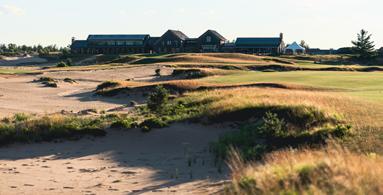
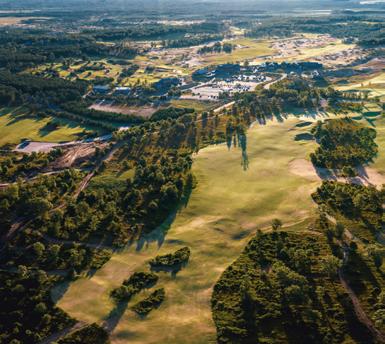
ing grass around the green’s rim, the designer rolled basketballs alongside the ridge to ensure the desired effect. The par-5 No. 7 provides even more entertainment as the bunker protecting the front side of the green was at one point the foundation for an old settlement home. The brick wall stretches across the width of the hazard. Note: Keep your approach shot to this putting surface far, far to the left or to the right or risk a huge X on your scorecard. No review of Mammoth Dunes is complete without reference to No. 14, a drivable par 4 designed by Brian Silvernail. This short hole begins from the top of a dune and then sweeps downhill all the way to the green. A slight draw Mammoth Dunes can catch a speed slot that directs the ball onto the green for an eagle putt. Rather than distract from the course’s overall design, this hole is in many ways a tribute to Kidd’s desire to create a fun and memorable experience from the 1st to the 18th hole. Opened in 2018 and built by the team of Coore and Crenshaw, The Sandbox is an ingenious 1,757-yd. 17hole par-3 course that serves up thrills and chills in a fraction of the time it takes to play a regulation course. Laid out over 25 acres, it features holes that vary in length from 40 yards to 150 yards. The green complexes are the featured attractions on the course, with Mammoth Dunes undulations and tiers challenging players to calculate landing areas sometimes far away from the flagstick locations. Depending on the greenkeeper’s inclination, some flags on the course have to be ignored as their position just behind a greenside bunker basically eliminate any chances of landing the tee shot anywhere near the hole. “The amazing response we received from our guests as soon as we opened Sand Valley, Mammoth Dunes, and The Sandbox encouraged us to magnify our scope and vision, said Brandon Carter, marketing and communications manager of Sand Valley Resort. “The enthusiasm encouraged us to look at other ways to make the resort a destination property.” One of the most talked-about golf projects in recent memory, The Lido, is a faithful re-creation of a long-lost Long Island golf course demolished by the US Navy for use as a WWII military base. Built in 1914 by legendary architects CB MacDonald and Seth Raynor, Sedge Valley
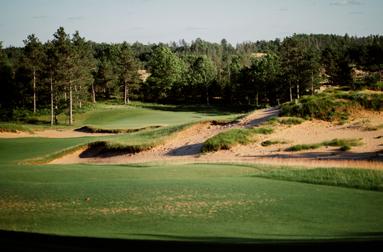
Sedge Valley
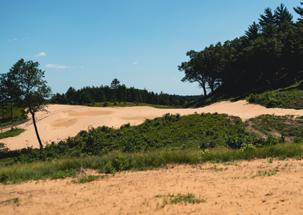
Sand Valley the course featured classic design elements including a Redan green hole and an Alps hole. Acclaimed architect Tom Doak and his Renaissance Design Company are building the course on 200 acres of sandy soil using 360-degree renderings painstakingly developed by Peter Flory. The golf historian studied old photographs and source materials to provide Doak a template to construct the layout down to every hump, hollow, and hummock built on the original property. What made this massive engineering feat possible is that The Lido 1.0 version was put together on a parcel of flat, rectangular shoreline property. The course was then shaped using 2 million cubic yards of sand before being layered with topsoil. Thus, a hand-constructed course was far easier to replicate than one placed atop land that had been shaped by nature for 16,000 years or so. “People have been talking about re-creating the Lido for at least 20 years,” Doak said in an exclusive interview with GolfChicago. “At one point that was a potential concept for what became Old Macdonald, the fourth course at Bandon Dunes. It was an idea that wasn’t going to go away until someone did it. Now there are two: Gil Hanse is building a version in Thailand, and mine is thankfully a lot closer to home. The challenge here is to be as faithful as possible to the original course, which is tough, because it’s been gone for decades, and we only have a bunch of old photos and rough sketches of what it was. But our consultant (Flory), assembled all of that for a video-game version, and we realized we could use that to get most of the dirt in the right places, and then interpret the photos just like we do on any other restoration to try to get the course right. In the process, we are using all kinds of mapping and construction technology I normally avoid like the plague, so it’s been a really interesting crash course in how that stuff can help us in the future.” Scheduled to open in 2023, The Lido will be a private club with limited access to resort guests. Nine holes have already been opened for Member preview play and the entire 18 holes are on-track to be available for a special sneak peek at the end of October. Originally targeted as the fourth golf course on the Sand Valley Resort grounds, Sedge Valley was pushed back on the development queue to prioritize the construction of The Lido. Inspired by the heathland and links courses on the English coast, the newest addition to the resort—designed by Doak—will play to around 6,000 yards and a par of 68. The layout is scheduled to open in 2024 and while it’s being built
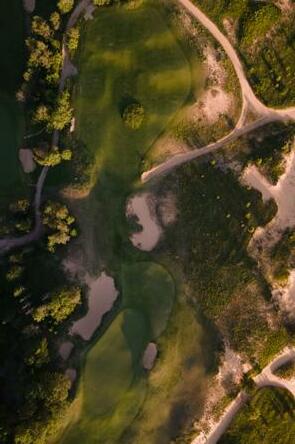
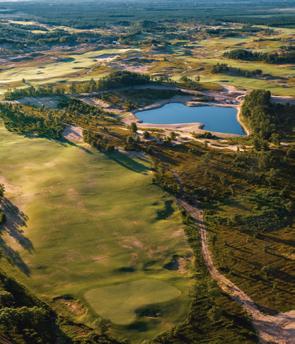
on relatively flat land, the same undulating characteristics that can be found on the other courses can be discovered here as well. The name of the course is derived from the grass-like plants native to northern climates which will frame holes across Sedge Valley. The layout will prioritize shot-making both off the tee and on approach shots to greens far smaller than those on the other three championship courses. “Sedge Valley is pretty spectacular,” said Doak. “And I think it will be very important for the game of golf for someone to show that length is not a critical component of a great course.” Sedge Valley will be the centerpiece of Sedge Village, with a large number of cottage home sites to be located adjacent to the layout. Most of the sites overlook a large lake. According to the plan, buyers may choose their own architects to create year-round or seasonal homes with the option to participate in the Sand Valley rental pool. Speaking of pools, the Sand Valley Pool House will rest a short walk from the main clubhouse and will offer an infinity pool, sauna, steam bath, spa services, and grab-and-go food. The addition of the new courses inevitably has led to planned expansion of Sand Valley’s practice area. A 50-acre practice facility will include a driving range that stretches out to 500 yards and expansive short game and putting green areas. Also on the slate is a massive putting course. Beyond the golf course developments, construction began in May of a multi-facility expansion that will include a 13,000 sq. ft. tennis center, a practice facility, and another restaurant. Tennis continues to play a major role at the resort as the 15 existing grass tennis courts (which even offer ball boys and ball girl service). The new center will also serve as home to a “royal tennis court” upon which “real tennis” is played. The game involves pear-shaped lopsided rackets, cloth balls and four irregularly sided walls. “This tremendous expansion which includes a barbeque restaurant, an Italian restaurant, the infinity pool, spa services, and other amenities are basically responses to feedback we’ve gotten from our guests on how we can best accommodate their lifestyles,” said Carter. “From the onset of the resort, we’ve wanted to deliver not just a great golf experience, but a great, memorable resort experience. Beginning in 2020, Sand Valley Resort transitioned into a four-season resort complete with holiday and wellness events as well as cross-country skiing, fat-tire biking and snowshoeing during the winter months. “The evolution from a seasonal resort to a full-year property made a lot of sense,” said Carter. “It allows our resort staff to stay in-place year round; it provides more jobs for the area labor pool; it gives the local community access to the resort which is booked-up throughout most of the spring, summer, and fall months, and it serves up an entirely different experience during in the cold months than during the warm months.” Carter pointed out that the addition of the wellness weekends has greatly expanded the demographics of the resort. “While a greater percentage of men visit us during the golf season,” he said. “Women now make up over 50% of our guest roster during the winter.” What began 16,000 years ago as a lakebed has evolved into one of America’s premier golf resorts in less than a single decade. For more information on Sand Valley Resort and the fall/winter season schedule of events, visit www.sandvalley. com.
The Lido
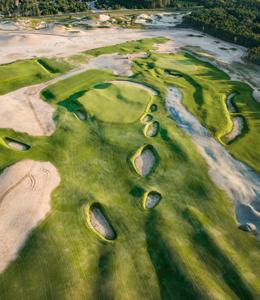
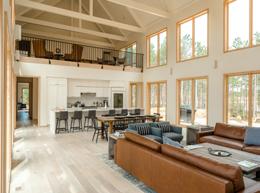
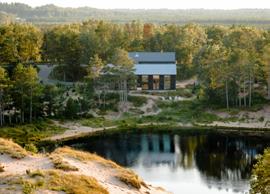
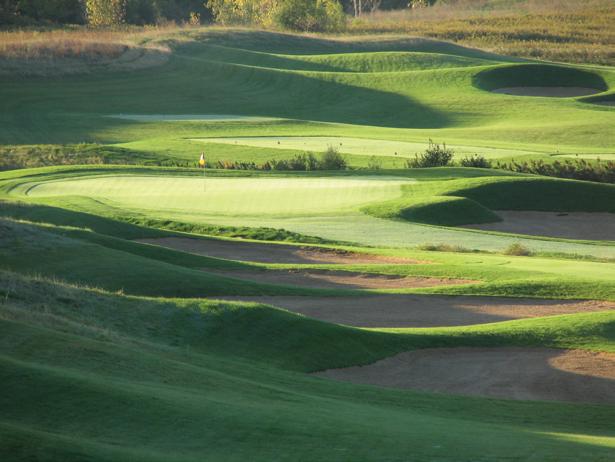
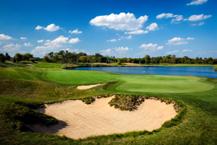

Dave Silbar
Great Golf in the Great Northwest
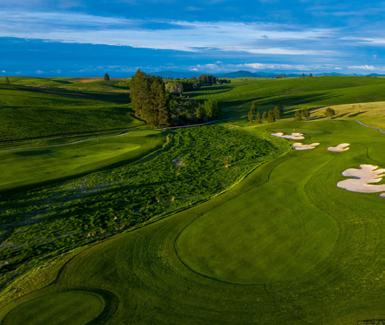
When someone thinks of Washington State, Seattle is always the first city that comes to mind.
But ask what the state’s second largest city is and that leads to plenty of head scratching.
Not only is Spokane number two on that list, but it’s on the opposite side of the state, roughly 35 miles from Northern Idaho to the east and 120 miles to the Canadian border to the north.
Expansive pine forests as far as the eye can see, the winding Spokane River snaking its way through town, snow-capped mountains in the distance, and a laid back way of life has made Spokane one of the fastest growing cities in the U.S.
Then there is the golf … and it is pretty darn fantastic. With a handful of courses operated by the City of Spokane, it’s hard to find an average one. The selection includes outstanding tracks like Indian Canyon, Latah Valley, The Creek at Qualchan, and Downriver, all designed to play through rugged terrain with towering pines lining virtually every hole. Elevation changes out here come often and can be severe, both Coeur d’Alene Resort Island Green upwards and downwards. That leads to some awe-inspiring views, not to mentioned terrific photo opportunities.
The real treats, though, are located a short drive east, across the Idaho border, where the resort town of Coeur d’Alene offers a Lake Geneva-type atmosphere and a golf course featuring the world’s only par 3 with a floating green. The 14th hole here tends to overshadow the rest of this spectacular property, but is certainly one of the best novelties I’ve ever found on a golf course.
About 30 miles down the road is the small town of Worley and the Coeur d’Alene Casino, home to Circling Raven Golf Club, ranked No. 1 in Courses You Can Play by Golfweek magazine in 2022. The course far exceeds its award designation, playing through forests, wide expanses of rolling terrain, and vistas overlooking snow-capped mountains, National Forested areas, and in the distance, hundreds of acres of bright yellow flaxseed.
But let’s revert attention back to the 14th hole at Coeur d’Alene Resort and its floating Circling Raven GC
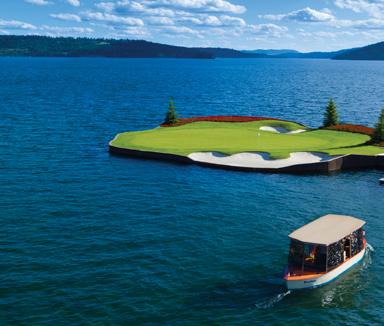

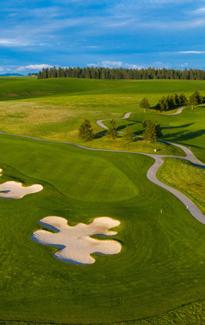
green—possibly the most iconic symbol … next to the potato … in the entire state. The green was built on a barge and, through a connection of pulleys on the lake’s bottom, can be moved to play anywhere from 100 TO 170 yards. A little boat aptly named “Putter” escorts players to the green after tee shots are hit, and certificates are handed out to anyone scoring par or better.
And while the 14th hole is what everyone has come here to play, a testament to the overall strength of this course is that it takes only as few holes before you start to forget that the 14th is coming. The course takes up a small footprint of land (compared to the other courses mentioned in this article) but packs a ton of beauty, with a handful of holes playing right next to Lake Coeur d’Alene.
“We take a lot of pride in just having a very meticulously groomed golf course,” says Head PGA Professional Andy McKimmie. “We have red geranium beds throughout the golf course and plant them every spring. Red was our owner’s favorite color. It’s a very bright red that gets great contrast throughout the golf course with the green. In addition to having views of the Lake on just about every hole, having an immaculately conditioned golf course is another one of our top priorities.”
But after 29 years working there, McKimmie says he still never gets tired talking about the famous floating green. “I mean, it’s the crown jewel of our course and obviously the signature hole. So yes, it a big focus for us. It’s truly a bucket list kind of thing and what put us on the map as far as golf goes.”
The front nine features a variety of holes, each one more beautiful and awe-inspiring than the last. Most interesting and memorable are three par 3s, the first a mere 130 yards but playing right next to Lake Coeur d’Alene. The next is a shorty, about 120 yards but to a three-leaf clover-shaped green with huge bunkers catching any shots that come up just short. Next up is a spectacular hole measuring 180 yards as the crow flies but whittled to roughly 150 yards due to the severe change in elevation. Golfers look down to a green surrounded by towering pines and the lake serving as a gorgeous backdrop.
Making the turn, we were surprised to hear from our forecaddie (more on him shortly) that the back nine had the prettiest of holes on the course (figuring the front was already pretty mind blowing).
Indeed, the back nine did not disappoint. Memorable holes include the par-5 11th, a slight dogleg left with a winding creek in front that makes it mimic the 12th hole at Augusta National’s Amen Corner. No. 13 is a 380-yard par 4 that features Lake Coeur d’Alene along the entire left side of the hole. That, of course, leads in the 14th hole and its floating green.
Coeur d’Alene Golf Resort provides (at no cost) a forecaddie or “player concierge” for each foursome. Ours happened to be 21-year-old Alaska native Sullivan Menard, a member of the 2019-2020 DePaul University Men’s Basketball Team who currently plays on both the men’s golf and basketball teams at Spokane’s Whitworth University.
Our experience with “Sully” was so great that we invited him to play Circling Raven two days later and were pleased to have him join us for another memorable day.
In addition to world-class golf, Spokane is an outdoor paradise with so much to do. The 40-mile Spokane River Centennial State Park Trail winds through eastern Washington from Nine Mile Recreation Area on Lake Spokane to the Idaho border. The mixed-use trail passes through high desert Ponderosa pine forests, basalt canyons, hip urban centers and cultural heritage sites. (Centennial Trail extends into Idaho for 63 miles in all).
The trail follows the Spokane River over bridges and trestles, and alongside the tumultuous eddies, large basalt formations, and turquoise waters of Riverside State Park; it then heads east through historic downtown Spokane, a welcoming lunch or overnight stop. Keep hoofing or pedaling east into the valley, where Arbor Crest Winery and Antoine Peak views are interspersed with the urban and suburban conveniences of Spokane Valley. Once in Idaho, it is possible to hike or ride all the way past Coeur d’Alene on the North Idaho Centennial Trail.
Coeur d’Alene Resort
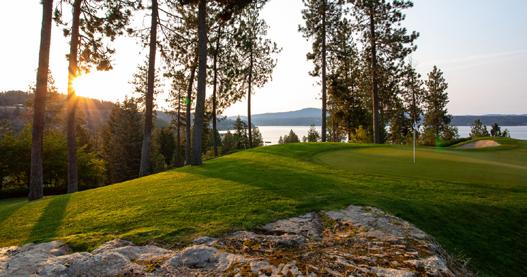
Circling Raven GC No. 11
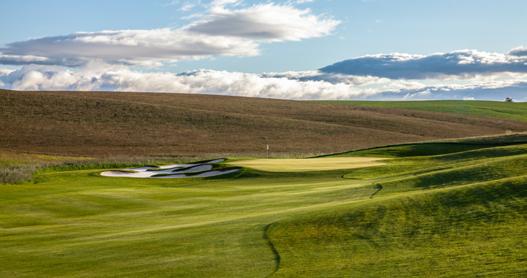
Circling Raven Golf Club and the Coeur d’Alene Casino Resort Hotel have soared to award-winning heights from their humble beginnings 25 years ago. Built on Coeur D’Alene Tribe’s land, Circling Raven Golf Club is home to the resort’s acclaimed golf course and sits on 620 varied acres of wetlands, forest, and Palouse grasses. By all accounts the course is one of course architect Gene Bates’ finest creations (he also designed Salish Cliffs in Washington, Southwood in Tallahassee, and Westfields in Virginia, among others).
The front nine plays through a meadow-style landscape, peaking on the difficult No. 9 hole. The meadows give way to expansive forest on the back nine, with each hole feeling like its own theater. The views on the course are varied, showcasing the entirety of the land. The course feels a small part of a much bigger landscape, providing a true sense of scale. Several of the tee shots play down into a larger landing area, giving the golfer plenty of opportunity to take in all of what’s in front of them.
While the course, which tips out at 7,189 yards, is a looker, it poses plenty of questions to the player. The better golfer must make clear decisions and execute them aggressively if they wish to score on this 74.0-rating, 144-slope course. Players on the Epson “Road to the LPGA” Tour found that out this past August at the 2nd annual Circling Raven Championship, while these professional women golfers raved about course condition and its ingenious layout. “Circling Raven is named for one of our tribe’s most important chiefs who guided us through our most difficult times,” said Laura Penney, CEO, Coeur d’Alene Casino Resort Hotel. “Our homelands mean everything to the tribe, so Circling Raven’s award is testament that we’re
Indian Canyon No. 10

Indian Canyon No. 16

nurturing it respectfully and our honoring our ancestors as well.”
In addition to being rated No. 1 in Idaho, the course is ranked among the country’s best in the Resort Course, Casino Course and Pro Shop categories, twice being named Merchandiser of the Year in the Resort Category by the PGA of America.
The many standout holes include No. 1, a great opening resort course hole. A short dog-leg par 5, it allows players to potentially get off to a great start. If you walk off with more than a par you feel like you gave one back, and giving back is a regular theme on the next two holes. No. 2 is a par 4 with an elevated, significantly sloping green where if above the hole is an almost certain 3-putt. And No. 3 is a stout, downhill par 3 that plays 185 from the men’s tees, longer from the tips.
No. 4 has a split fairway bisected by sand bunkers that rewards players who take the lower, riskier approach due to the wetlands bordering the length of the left rough. The top fairway is safer and a bit longer, but well worth the better angle and view into the green.
No. 10 is a short par 4 with risk-reward options tempting the player. Bold players can aim for the green, and with a long forced carry be rewarded with finding it or being just short with a chip or pitch for eagle. Miss and you’re doomed to a wetlands penalty shot death and bogey or worse.
Back in Spokane, our three favorite courses include Indian Canyon, Latah Creek, and The Creek at Qualchan. The

Creek is Spokane’s newest golf course and features a creek meandering throughout the course, five ponds, wooded and hilly areas, and holes with open beauty and well-protected greens. The course is located in a very natural setting, and is a sanctuary for many species of birds and wildlife. Playing to a par 72 at 6,559 yards, the Creek at Qualchan will give all skill levels a special golf experience. While several holes can be described as targeted golf, the natural beauty and panoramic views are awe-inspiring.
Indian Canyon is another special place, with massive elevation changes playing through towering pines, several holes over massive panoramic views of downtown Spokane while others play through dense pine forests. Green, plush and challenging, Latah Creek is a ‘must play’ when visiting the area.
Small and easy to navigate, Spokane International Airport (GEG) is easily accessible by air, with usually one-stop when departing from O’Hare, Midway, or Milwaukee. Most flights go through Minneapolis, Denver, Salt Lake City, or Seattle. Rental cars are onsite at the airport with a myriad of options when it comes to accommodations..
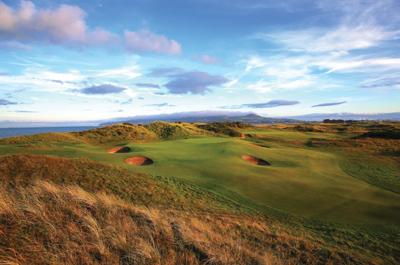

Produced by Whiskey Hill Brewery in Westmont, Illinois
Good from the 1st tee box all the way to the 19th hole!
Available at Green Street Grille in Bensenville, and hopefully at a golf club near you. www.whiskeyhillbrewing.com
